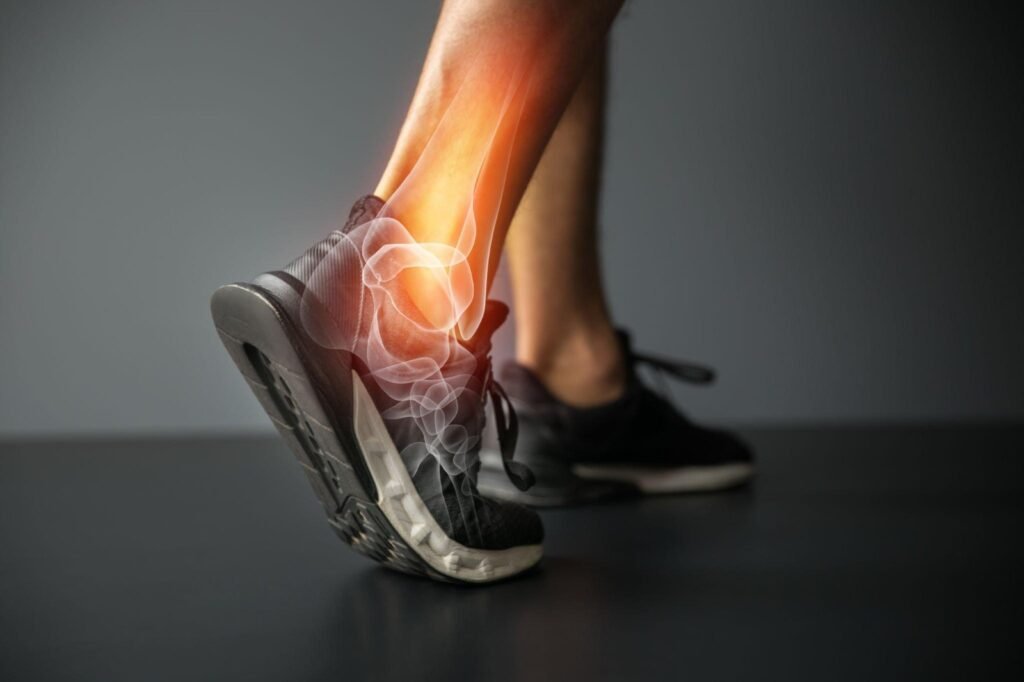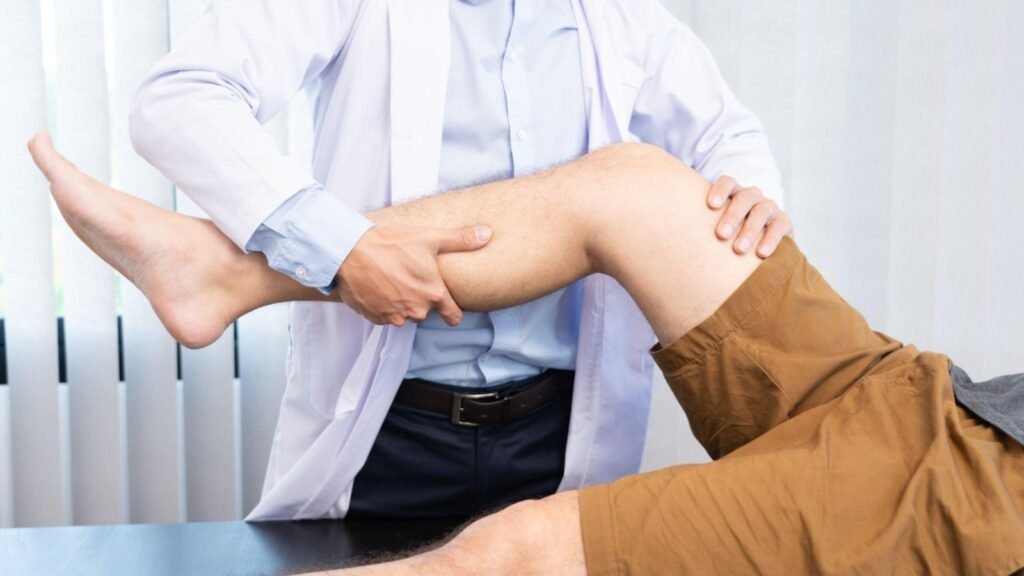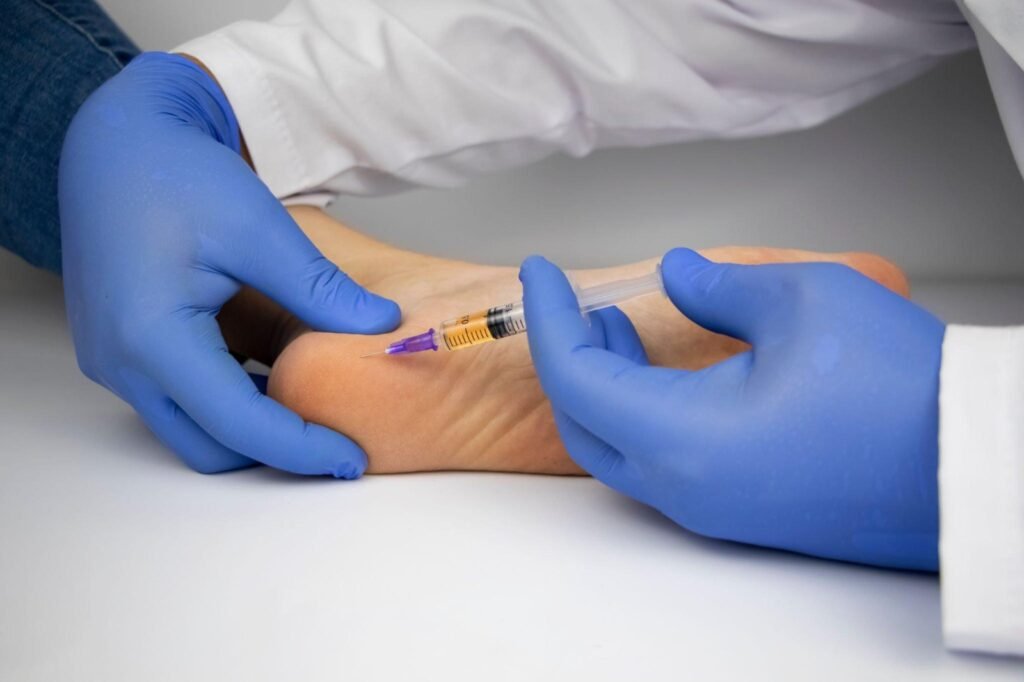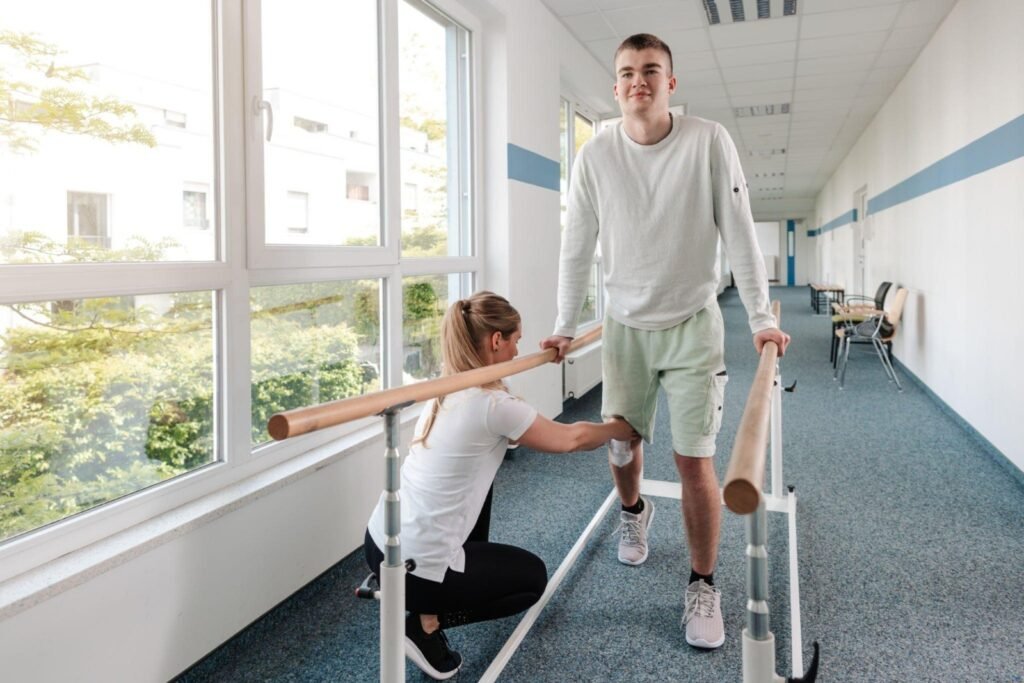SPORTS INJURY

Conquering Sports Injuries
with Specialized Care
Conquering Sports Injuries with Specialized Care
SPORTS INJURY Q&A

WHAT IS A SPORTS INJURY?
A sports injury is an injury that occurs during physical activity. Sports injuries come in a variety of shapes and sizes, and they can affect any part of the body. These injuries can result from a variety of causes, poor training techniques, inadequate equipment, including accidents, and insufficient warm-up or stretching. Sports injuries most frequently occur as fractures, sprains, strains, and dislocations.
The type and severity of a sports injury can vary depending on the sport, the athlete's conditioning, and the nature of the activity. Proper prevention, conditioning, warm-up, and prompt treatment are essential aspects of managing sports injuries and facilitating a safe return to physical activity.
WHAT ARE EXAMPLES OF COMMON SPORTS INJURIES?
Common sports injuries include a wide range of conditions that affect various parts of the body.
Here are some examples of commonly encountered sports injuries:
- Sprains: A sprain is a tearing or stretching of a ligament, the tough, fibrous tissue that connects bones together. Sprains are often caused by a sudden twist or fall. Some common examples of sprains include ankle sprains, wrist sprains and knee sprains.
- Strains: A strain is a stretching or tearing of a muscle or tendon, the tissue that connects muscle to bone. Strains are often caused by overuse or sudden exertion.
- Fractures: A fracture is a break in a bone. Fractures can be caused by a direct blow to the bone or by a sudden fall or twist. Some common examples of fractures include wrist fractures, ankle fractures or any other fractures.
- Dislocations: A dislocation is when a bone is forced out of its normal position in a joint. Dislocations can be caused by a sudden blow to the joint or by a fall. Some common examples of dislocations include elbow dislocations, shoulder dislocations, and finger dislocations.
- Shin Splints: Shin splints are a pain in the front of the lower leg, caused by inflammation of the muscles, tendons, and bone tissue in the shin. They are common in runners and other athletes who participate in activities that involve repetitive impact on the lower legs.
- Plantar Fasciitis: Plantar fasciitis is a pain in the heel caused by inflammation of the plantar fascia, a thick band of tissue that runs along the bottom of the foot. It is common in runners or other athletes who participate in activities that involve a lot of walking or running.
- Tendonitis: Tendonitis is an inflammation of a tendon, the tissue that connects muscle to bone. It is often caused by overuse or sudden exertion.
Proper warm-up, prevention, conditioning, and adherence to safety guidelines are essential in reducing the risk of these injuries. Proper and appropriate sports medicine is crucial for a timely recovery and a return to sports activities. If an individual sustains a sports injury, consulting with a healthcare professional, such as a sports medicine physician, is recommended for an accurate diagnosis and tailored treatment plan.


WHAT ARE THE RISK FACTORS FOR SUSTAINING A SPORTS INJURY?
A Sports injury can range from minor sprains and strains to more serious fractures and dislocations. While many sports injuries are preventable, there are a number of risk factors that can increase your chances of getting hurt.
Here are key factors that increase the risk of sports injuries:
- Lack of Warm-Up and Stretching: Failing to properly warm up before engaging in physical activity can increase the risk of injury. Cold muscles and joints are more prone to strains and sprains.
- Inadequate Conditioning: The body becomes more susceptible to injuries during sports activities due to weariness and a decrease in muscle strength caused by inadequate physical conditioning and fitness levels.
- Poor Technique: Incorrect or poor technique in executing sports movements can contribute to injuries. Proper form and technique are essential in preventing strains, sprains, and other injuries.
- Overtraining: Excessive training without adequate rest and recovery time can lead to overuse injuries. These injuries result from repetitive stress on the muscles, tendons, and joints.
- Inadequate Equipment: Using improper or ill-fitting sports equipment, such as shoes, helmets, or protective gear, increases the risk of injuries. Well-maintained and appropriate gear is crucial for injury prevention.
- Environmental Factors: Uneven playing fields, bad lighting, and unfavourable weather can all lead to accidents and injury when performing sports.
- Previous Injuries: A person with a history of previous injuries might have more chances to re-injury. Proper rehabilitation and preventive measures are crucial in reducing the risk of recurrence.
- Age and Fitness Level: Age and overall fitness level play a role in injury risk. Older individuals may have different vulnerabilities, and those who are less fit may be more prone to injuries.
- Biomechanical Factors: Individual differences in biomechanics, such as foot arch structure or limb alignment, can contribute to injury risk. These factors may be addressed with proper footwear.
- Sports Type: The type of sport and its inherent demands influence the risk of specific injuries. Contact sports may pose a higher risk of trauma, while repetitive motions in certain activities can lead to overuse injuries.
Awareness of these risk factors empowers athletes to take proactive measures, such as incorporating proper maintaining good conditioning, warm-up routines, using correct equipment, and seeking professional guidance when needed. Implementing preventive strategies can significantly reduce the chances of sports injuries and contribute to long-term athletic well-being.
DO I HAVE A SPORTS INJURY?
Whether or not you have a sports injury depends on your symptoms and the type of sports activity you were engaged in when you experienced the pain. If you are experiencing pain, swelling, or difficulty in moving any part of your body after playing a sport, it is important to get a diagnosis.
Here are some common signs that you may have a sports injury:
- Pain: Persistent pain, especially during or after physical activity, can be a sign of a sports injury. The location, intensity, and nature of the pain can provide clues about the type of injury.
- Swelling: Swelling around a joint or specific area of the body may indicate inflammation, which is common in many sports injuries. Swelling can limit range of motion and cause discomfort.
- Bruising: Visible bruising or discoloration of the skin may suggest a contusion or injury to blood vessels beneath the skin's surface. This is common in impact-related sports injuries.
- Limited Range of Motion: Difficulty moving a joint or body part through its normal range of motion may indicate a musculoskeletal injury affecting tendons, ligaments, or muscles.
- Weakness: Feeling weakness or instability in a particular area, especially during weight-bearing activities, may indicate an injury affecting the supporting structures of a joint.
- Tenderness to Touch: Increased sensitivity or tenderness to touch in a specific area may suggest localised inflammation or injury.
- Difficulty Bearing Weight: If you find it challenging to bear weight on a limb or joint, it could indicate an injury such as a fracture, sprain, or strain.
- Changes in Performance: A sports injury may be the cause of any noticeable changes in your performance, such as a decrease in speed or coordination.
Here are some general questions that your sports medicine physician may ask you to help determine if you have a sports injury:
- What type of sports activity were you participating in when you experienced the pain?
- How did the pain start?
- Where is the pain located?
- Is the pain constant or does it come and go?
- Does the pain make it difficult to move?
- Have you noticed any swelling, bruising, or deformity in the affected area?
Consult with a sports medicine physician and they can perform diagnostic tests, such as imaging studies or physical examinations, to identify the specific injury and location of injury and also recommend an appropriate treatment plan. Neglecting potential sports injuries can lead to further complications and prolonged recovery times. Early intervention and proper management are crucial for a quicker and more successful return to physical activity.


HOW IS A SPORTS INJURY TREATED? Or What are the treatment methods for a sports injury?
The treatment for a sports injury involves several approaches tailored to the specific nature and severity of the injury.
Here's a breakdown of common treatment options used in the sports injuries:
- Rest: Sufficient rest is essential to allow the injured tissues to heal. It may involve modifying or temporarily ceasing the activity that caused the injury.
- Ice: Applying ice to the injured area helps reduce inflammation and provides pain relief. Cold packs or ice wraps are commonly used during the initial stages of treatment.
- Compression: Compression with bandages or wraps helps control swelling and provides support to the injured area. It should be applied carefully to avoid excessive pressure.
- Elevation: Elevating the injured limb or area can help minimise swelling by allowing fluids to drain away from the injured site.
- Physical Therapy: Rehabilitation through physical therapy is a crucial aspect of sports injury treatment. Therapists design exercise programs to improve strength, flexibility, and overall function.
- Bracing or Splinting: Depending on the type and location of the injury, the use of braces, splints, or supportive devices may be recommended to stabilize and protect the injured area.
- Orthotic Devices:
Custom-made or over-the-counter orthotic inserts can provide additional support and help correct biomechanical issues contributing to the injury. - Surgery: For certain injuries, surgical intervention may be required to repair damaged tissues, stabilise joints, or address severe fractures.
It's crucial to remember that the type and level of the sports injury will determine the exact treatment approach. Following the recommended treatment plan and seeking immediate medical assistance from sports medicine physicians are essential for a full recovery and a safe return to physical activity. Incorporating preventive steps can also help lower the chance of future injuries. These include adequate warm-up, conditioning, and technique.
Soft Tissue Sports Injury
Explore the world of soft tissue sports injuries with our insightful ebook, offering a comprehensive exploration of various aspects related to these injuries. From understanding the underlying causes to exploring treatment options and prevention strategies, this guide is designed to provide in-depth knowledge for athletes, fitness enthusiasts, and healthcare professionals. Whether you’re seeking information on specific injuries or looking to enhance your overall awareness of soft tissue sports injuries, this ebook serves as a valuable resource. Unlock a wealth of insights to better comprehend, manage, and prevent soft tissue sports injuries.





